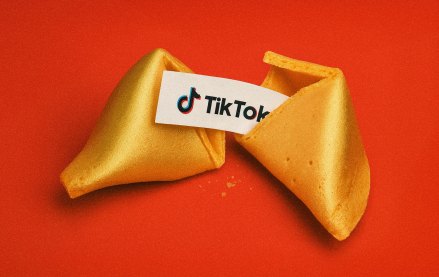Save 50% on a 3-month Digiday+ membership. Ends Dec 5.
How DTC brands can survive in the age of Amazon by embracing their own niche

From Sears and Kmart to Toys “R” Us and RadioShack, the torrent of recent store closures has prompted all of us to ask: Is Amazon killing retail?
One thing is certain — the “Amazon Effect” has irrevocably changed the world of retail. Overshadowed by this sprawling giant and amidst the global shift towards online shopping and declining foot traffic, many retail stores are undoubtedly concerned about maintaining their competitive edge.
The good news is that while the digital revolution gave birth to this hegemonic retailer, it also unveiled a plethora of creative resources for marketers. And while Amazon does boast the world’s largest marketplace, there are still opportunities for DTC brands to thrive.
Here’s how brands can leverage the new landscape — and Amazon’s limitations — to stay competitive:
Imaginative, experiential retail
We’re in the age of pop-ups, drops and partnerships, and retail environments are becoming increasingly fluid, nimble and inventive.
With direct access to consumers and highly personalized data, retail brands now have the ability to create branded ecosystems in the right place, at the right time, for the right audience. With the abundance of customer data, powerful geolocation technology, trend forecasting tools and access to real-time feedback, brands have more power, flexibility and creative autonomy than ever before in history. And despite the stereotypes of millennials and GenZers being glued to their screens, much of this cohort is actually desperate to unplug and get out of the house.
According to a report by Ofcom, one-third of consumers in the US and UK has expressed concerns over the impact that their smartphone has on their wellbeing, with 1 in 5 consumers having taken a digital detox.
With growing concern over screen addiction and a desire to seek tangible, real-world experiences, retail brands have an opportunity to exploit the multidimensionality and multisensory possibilities of physical spaces in new and imaginative ways. From IKEA’s VR Experience to Adobe’s “Store of the Future,” we’re already seeing waves of retail brands transform physical spaces from inventory-led environments into more interactive and immersive playgrounds that foster deeper connections with consumers.
Focusing on singularity, not universality
Amazon’s mammoth size is usually perceived as its strength, but it actually creates some limitations. The company will never boast the flavor, story and cohesive community of a niche retail brand, nor will it be able to engage with customers in curated, personalized or creative ways.
As a result, there are ample opportunities for brands to stand out in the current market by focusing on exactly what Amazon is not. By narrowing in on niche product, exceptionally creative and tailored customer service, curated messaging and a narrow target audience, retail brands can naturally attract customers who hold a special affinity for their distinct offerings and brand story.
Luxury retail brands are in a particularly strong position, as the one category Amazon has had trouble cracking is the luxury goods market. Not only do these brands embody unique qualities like legacy, expertise and exclusivity, but the millennial and GenZ cohorts are also increasingly seeking out exclusive experiences and products.
A report by Bain & Co estimates that by 2025, millennials and GenZers will account for 25 percent of the global personal goods luxury market. By staying niche, embracing distinctiveness and leveraging all that’s possible with a more singular category and existence, brands can focus on individualized value and carve out a competitive advantage.
Cultivate a cohesive community
One of the most powerful forces of the digital revolution has been the organic emergence of online retail brand communities and tribes.
Thanks to the open, dynamic platforms of social media, customers can unite in shared passion and connection to a brand. In turn, brands can convert these communities into advocates and influencers who happily promote the brand and its story to their social circles. Over time, these communities can become powerful vehicles for gaining insight, crowdsourcing for product dev decisions, igniting buzz around events and product launches and building meaningful identity.
Creative, post-sale relationship building
While most retail brands will likely never beat Amazon when it comes to volume of infrastructure and data, there is one area of business and engagement that direct-to-consumer brands can really excel in: post-sale.
Beyond its return policy, Amazon doesn’t provide much post-sale value. For direct-to-consumer brands, the opportunities to continue engagement after the sale are endless, whether it’s through custom tutorials, exclusive invites to experiential events or sneak peeks into future product releases.
Looking forward
It might feel like the future of retail is Amazon, but a diversified marketplace is a stronger marketplace. And all available research about consumer behavior and psychology tells us that people crave a variety of choice and highly personalized experiences.
Instead of anticipating struggle, brands and marketers should shift their focus onto their individual strengths and offerings, as well as the plethora of exciting, creative resources that have emerged in the recent past. By taking advantage of the new landscape in fresh and imaginative ways, and by staying committed to cultivating niche offerings with exceptional customer service, any brand, no matter its size, can build and sustain a loyal community of consumers.
More from Digiday

The Trade Desk loosens its grip on pricing amid buyer pressure
Amid fierce DSP competition, media agencies are finding The Trade Desk’s reps in a negotiating mood.

Behind the rise of the chief productivity officer and what it means for companies and employees
The CPO is envisioned as the leader who orchestrates people and technology together to drive business outcomes.

TikTok Shop sheds bargain-bin reputation as average prices climb across categories
An analysis by e-commerce intelligence firm Charm shows average prices climbing across more than a dozen key categories.





